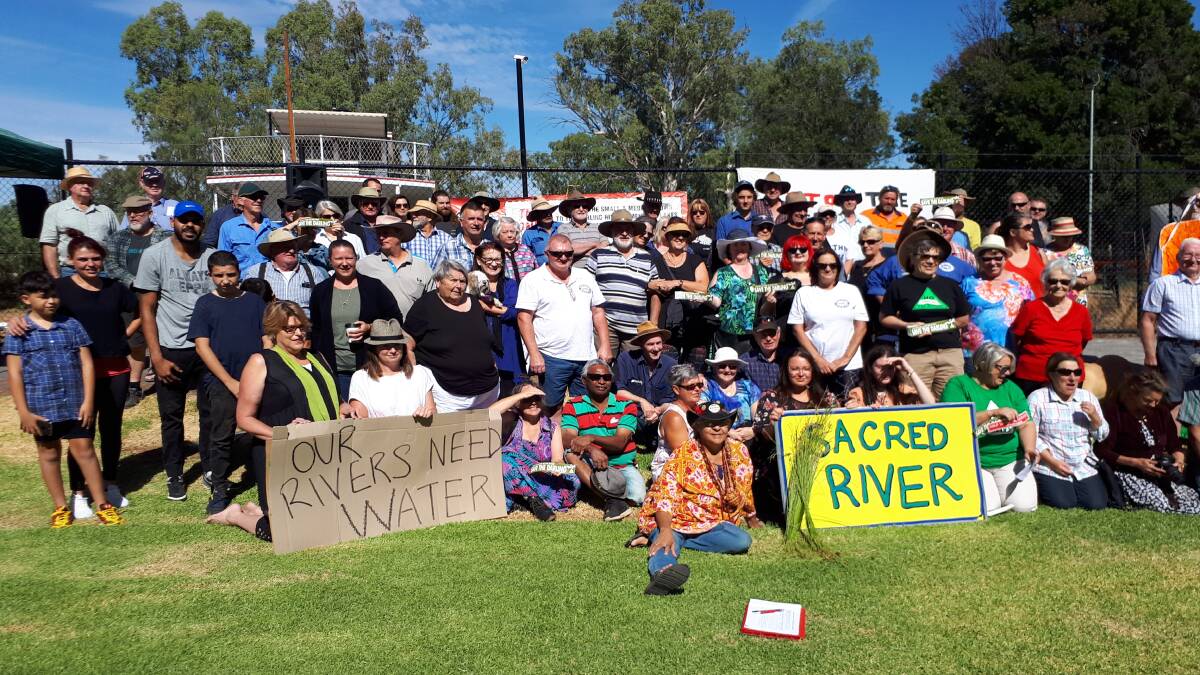
In February 2018 an unlikely mix of activists, town residents, cockies and even a celebrity chef gathered on the banks of the Darling River at Wentworth, downstream of Menindee Lakes, to protest NSW government’s plans for a drinking water pipeline from the Murray River to Broken Hill.
Subscribe now for unlimited access to all our agricultural news
across the nation
or signup to continue reading
It was a prophetic event.
Three mass fish kills have wiped out hundreds of thousands of native fish less than 12 months since the protesters told The Land that the pipeline would enable river operators to reduce the amount of stored water at Menindee, leaving the Darling high and dry.
“Menindee Lakes were drained before Christmas and we’ll run out shortly,” said Menindee stone fruit grower Graeme Jarrett last year.
“I believe there has been a plan to drain the lakes just to shut us down out here.”
RELATED READING
Darling River Action Group chairman Mark Hutton said there had been 60 per cent less flows over the past 18 years.
River operators began water releases in late 2016. By October 2017 there were warnings they had gone too far. Lower Darling Pastoralists Association member Katharine McBride, Tolarno Station, said isolate stagnant pools would damage fish populations in the Darling.
“A depleted lake and dry river will stop the spawning of native fish which populate the entire river system.”
NSW government insists the pipeline is a standalone drinking supply project. But by reducing Broken Hill’s reliance on Menindee Lakes frees the government’s hand to re-engineer the lake system.
That means using several short bursts of flow down the Darling to reduce evaporation of stored water, and banking the savings against the Murray Darling Basin Plan, effectively limiting recovery from irrigators.
But despite accusations of past mismanagement and dire forecasts, we can still save the Darling and we may only need the amount of water currently available to it.
That’s according to native fish expert and Adjunct Research Professor at Charles Sturt University Martin Mallen-Cooper, who has studied fish ecology and the historical flows in the Far West NSW River for decades.
“Recreating natural habitat in the Lower Darling isn’t hard, because of the narrow channel. You might only need 500 megalitres a day for fish populations to recover and improve, compared to say 2000ML a day in a wider channel; and probably only 100ML a day in crisis periods to prevent fish kills,” he said.
John Holland will build the 270 kilometre water link in joint venture with pipeline construction company MPC Group at a total cost of $467 million, under the budgeted $500m cost estimate.
John Holland and water infrastructure operator Trility will run the pipeline for a $107m fixed price 20 year contract.
NSW Minister for Regional Water Niall Blair said the pipeline is a game-changing piece of water security infrastructure and a win for Australian steel.
“The people of Broken Hill have just as much right to a safe and reliable supply of water as anyone else across the state and we’re determined to deliver it to them,” Mr Blair said.
Water will be drawn from Wentworth on the Murray River and follow the Silver City Highway North to Broken Hill (population 18,000). It will pump up to 37 megalitres a day.
The town’s population of 18,000 needs about 6 gigalitres a year. The pipeline is regional NSW’s largest community water supply project.
Mr Blair has instructed the builders to use Australian steel and Onesteel at Port Kembla is already rolling steel for the project.
The project workforce is expected to peak at 500, injecting $50m into the Wentworth and Broken Hill economies and generating more than 150 local jobs. Construction will begin next year.


